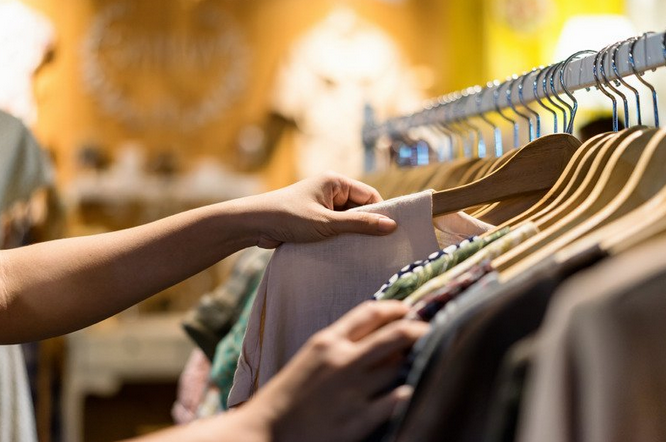When looking at the rising popularity of thrifting, one must not only look at its history but how it has affected people across the world.
Thrifting first became popular during the 1800s when second-hand clothing stores and pawnshops began to appear in response to the increase in textile waste. Then during the 1920s, the growth of immigration populations caused the rise of resale stores, and Christian organizations like Salvation Army helped destigmatize shopping second-hand.
However, in the past decade, Gen-Z has brought thrifting to the forefront by calling out fast fashion brands regarding controversies consisting of the unethical treatment of workers and unsafe working conditions. One of the biggest scandals of this type of treatment is the 2013 collapse of Rana Plaza in Dhaka, Bangladesh. On April 24, 2013, the collapse of the Rana Plaza, which held five garment factories, caught fire, killing 1,132 people. Gen-Z has helped push the fact that companies have the responsibility of addressing environmental and social issues.
While thrifting would be considered by most to be low-cost, ethical and sustainable brands are often pricier than fast fashion brands. The pressure from social media apps like Instagram and YouTube and clothing brands like H&M and Zara to follow fashion trends pushes customers into paying more money for the same clothing styles. Because the pressure to shop ethically and to be trendy have become prominent, thrift stores have become popular for people who do not have the money to buy from sustainable brands, which has caused the rise of resale platforms like ThredUp and Depop as well as DIY and thrifting YouTubers like Best Dressed and Emma Chamberlain.
Thrifting has become popular both with low-income consumers and wealthy consumers. Because of the popularity with wealthy consumers, low-income communities have limited options. On the other hand, the rise of thrifting has caused a surplus in donated materials, and more non-profit stores thrift stores for low-income communities have opened.
If students would like to go thrifting, there are thrift stores nearby. Some thrift shops in the Ellisville-Laurel area are Shirley’s, Salvation Army, Southern Magnolia’s, The Remnant, and the most well-known thrift store, Goodwill.
by Erin Fairchild

